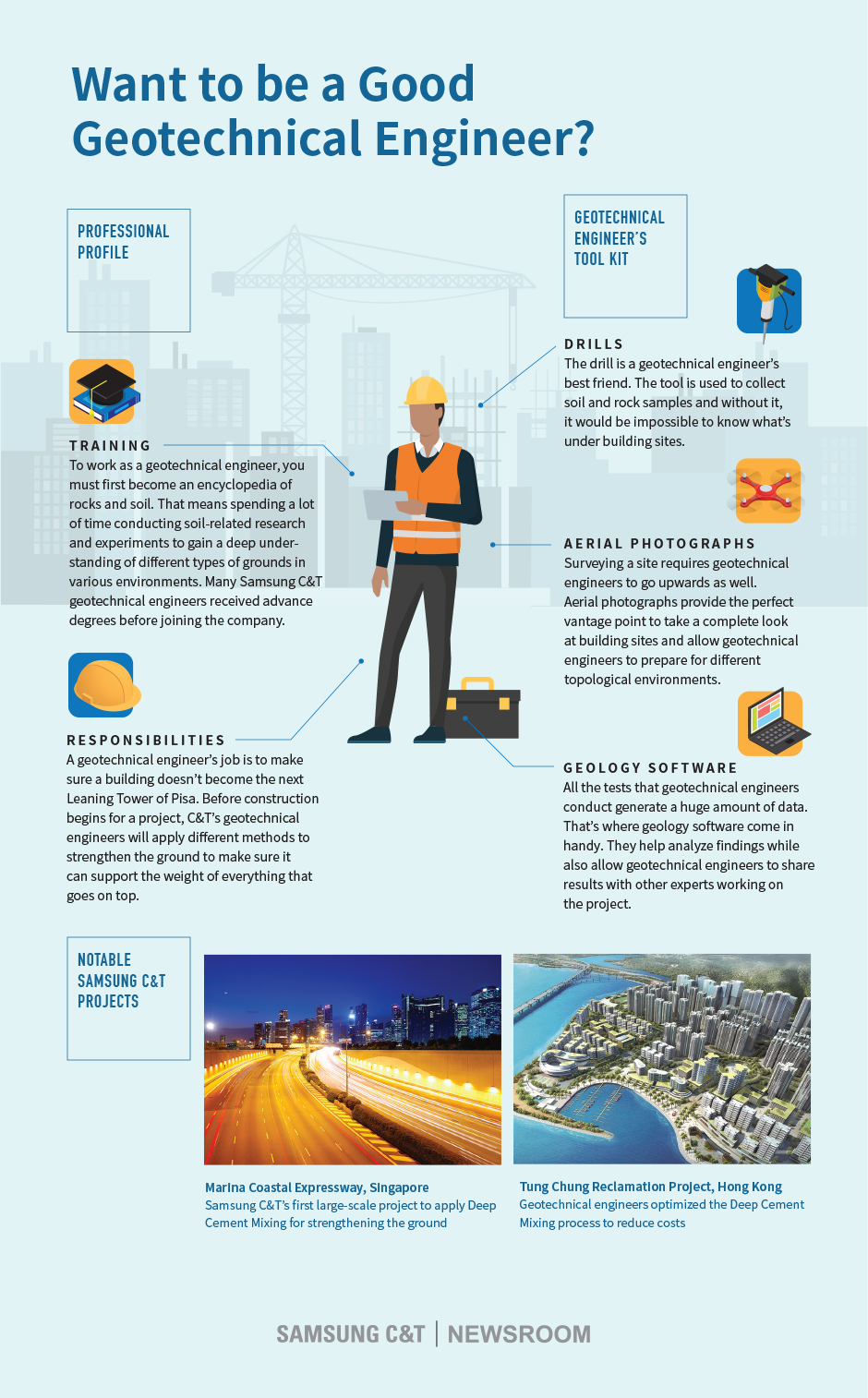The 2-Minute Rule for Geotheta
The 2-Minute Rule for Geotheta
Blog Article
7 Easy Facts About Geotheta Explained
Table of ContentsOur Geotheta IdeasFacts About Geotheta UncoveredAbout GeothetaIndicators on Geotheta You Need To Know
They team up with civil engineers, architectural engineers, designers, and other experts to integrate geotechnical factors to consider right into the general task style and building and construction procedure. This requires reliable synergy, control, and communication to make certain that the geotechnical aspects align with the job purposes and fulfill regulative needs.Mining & Products Design: Concepts of drilling, penetration rates, and factors influencing the selection of exploration technique. Blasting methods in surface and below ground functions. Mechanical and constant techniques to fragmentation, including longwall shearing and fullface boring.
Modelling of fragment and fragment dimension circulations; comminution as a transfer function. Comminution innovation: squashing, grinding, size category. Integrated evaluation of fragmentation and comminution procedures. Supplied by: Mining & Materials Engineering.
Some Of Geotheta
Bachelor's level programs in civil, geotechnical, geological, and environmental engineering generally last 4 years and consist of general education training courses in English, social science, and the humanities, as well as training courses in sophisticated maths, structural geology, and fluid mineralogy. (https://www.find-us-here.com/businesses/Geotheta-Alexandria-Alabama-USA/34113488/)
Geotechnical engineering entails the assessment of the dirt and rock conditions at a specific site, and their implications for the advancement of that site. As many frameworks depend on the ground for support, it is without surprise that a comprehensive understanding of the ground problems, and the viability of foundation systems, are important to the long-term security and efficiency of the building or structure.
Being experts in the examination of geological formations and ground behaviour, geotechnical engineers carry out clinical investigations and screening to recognize the impact these geological formations might carry the layout and building and construction of building, civil and facilities tasks. This proficiency is vital for the layout and building and construction of structures, roadways, tunnels, dams, bridges, and water supply and sewage systems.
The geotechnical group at Douglas Partners consistently talk to designers, style engineers, developers, and home builders to make suggestions on style and advancement propositions to make certain that the built frameworks are suitably made for the ground problems. For instance, the style of footing systems needs to consider the weight of the framework, the ability of the ground to sustain that weight with each other with activity resistances and efficient construction.
Our Geotheta PDFs
This job is substantially streamlined by the use of our Douglas Map geospatial platform which makes this information conveniently accessible in an easy to use internet browser user interface. A geotechnical engineer will route the exploration of boreholes and test pits to collect dirt and other examples, and likewise evaluate surface area functions and ground direct exposures to form a geotechnical version of the subsurface conditions.
Relying on the task type and ground problems came across, laboratory testing might among various other things assess strength, compressibility, reactivity and/or leaks in the structure of soil and rock samples. After this information is accumulated and collected, the outcomes are used for a geotechnical version of the site, which is normally presented as sections throughout the site.

A geotechnical examination naturally can just assess the ground problems at the areas pierced or excavated. Natural variants in dirt and rock problems can take place throughout a site and between examination places. It is consequently good practice that the geotechnical engineer be maintained throughout construction of the job to give on-site confirmation that the ground problems experienced are constant with the expectations and suggestions given in the geotechnical investigation record.
Geotheta Fundamentals Explained
Geotechnical designers use their thorough understanding of soil and rock to assess threat and solve troubles on diverse infrastructure projectsGeotechnical design is a specialist branch of civil engineering which considers the behaviour of earth products and the application of soil and rock auto mechanics. Tailings Engineer. As a geotechnical engineer, you will assess the physical, mechanical and chemical homes of soil and rock in order to make foundations, maintaining frameworks and earthworks
Geotechnical design is carefully linked to and overlaps with, both design geology and ground engineering - https://www.indiegogo.com/individuals/37984319. It's feasible to specialise in geotechnics or help a geotechnical company but be called a design geologist or a ground designer. As a geotechnical engineer, you'll require to: construct and preserve partnerships with customers and other experts associated with the website, throughout each projectmaintain safety and security requirements on website be mindful of cost implications when you make recommendationsstudy geological maps and aerial photos from a variety of resources and from various time periodsexamine construction prepares click here for info to see just how feasible they are based on your understanding of the siteinvestigate threats or geological hazards for the sitesearch for eco delicate functions, such as land fill start to establish accurate and interpretive ground modelsplan field investigationsdrill and analyse examples of bedrock, soil, groundwater and extra materials supervise various other experts on sitesolve technological problems as they occur, such as unexpected structures at drill sitesmonitor conditions throughout and after building to ensure structures are secure in the brief and long termadding information accumulated on site to your first researchcreating geotechnical calculations, drawings, and 2 or three-dimensional computer system designs translating the datamaking referrals regarding the recommended usage of the site

Report this page